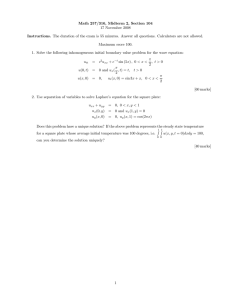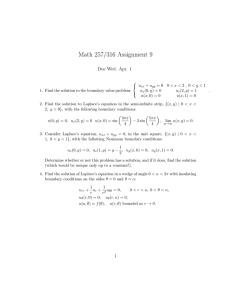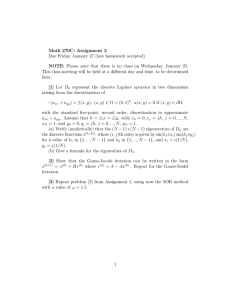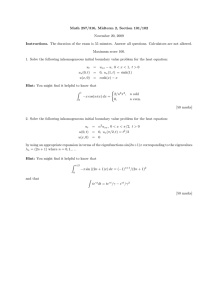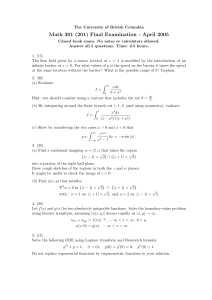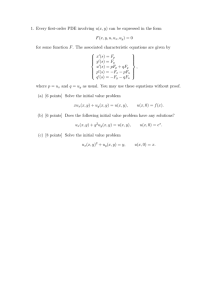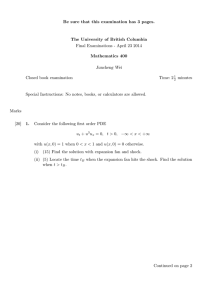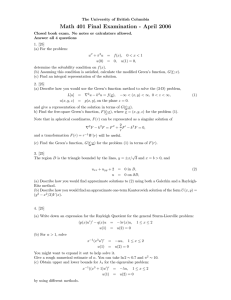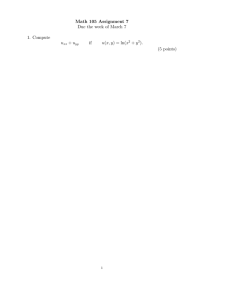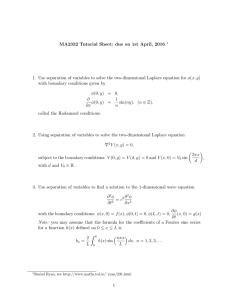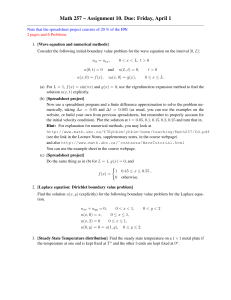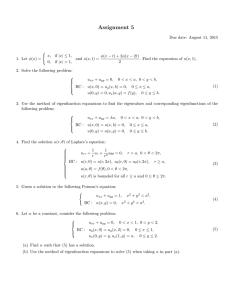Math 316 – Assignment 9 Due: Wednesday, April 30, 2011
advertisement
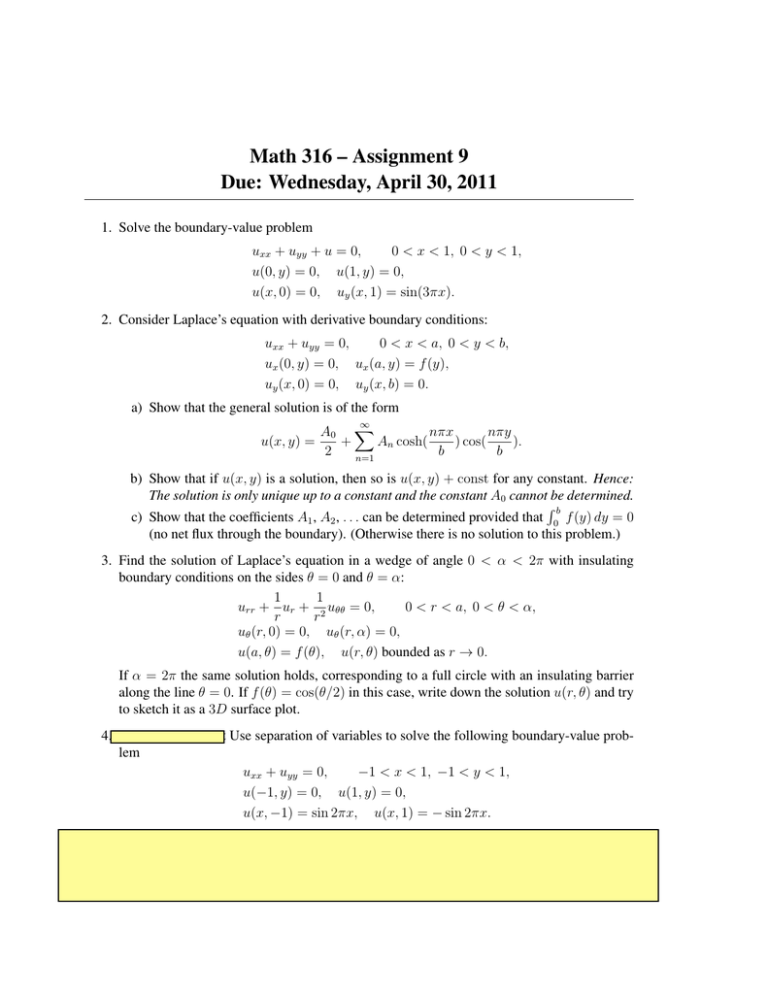
Math 316 – Assignment 9 Due: Wednesday, April 30, 2011 1. Solve the boundary-value problem uxx + uyy + u = 0, 0 < x < 1, 0 < y < 1, u(0, y) = 0, u(1, y) = 0, u(x, 0) = 0, uy (x, 1) = sin(3πx). 2. Consider Laplace’s equation with derivative boundary conditions: uxx + uyy = 0, 0 < x < a, 0 < y < b, ux (0, y) = 0, ux (a, y) = f (y), uy (x, 0) = 0, uy (x, b) = 0. a) Show that the general solution is of the form ∞ A0 ! nπx nπy u(x, y) = An cosh( + ) cos( ). 2 b b n=1 b) Show that if u(x, y) is a solution, then so is u(x, y) + const for any constant. Hence: The solution is only unique up to a constant and the constant A0 cannot be determined. "b c) Show that the coefficients A1 , A2 , . . . can be determined provided that 0 f (y) dy = 0 (no net flux through the boundary). (Otherwise there is no solution to this problem.) 3. Find the solution of Laplace’s equation in a wedge of angle 0 < α < 2π with insulating boundary conditions on the sides θ = 0 and θ = α: 1 1 urr + ur + 2 uθθ = 0, 0 < r < a, 0 < θ < α, r r uθ (r, 0) = 0, uθ (r, α) = 0, u(a, θ) = f (θ), u(r, θ) bounded as r → 0. If α = 2π the same solution holds, corresponding to a full circle with an insulating barrier along the line θ = 0. If f (θ) = cos(θ/2) in this case, write down the solution u(r, θ) and try to sketch it as a 3D surface plot. 4. Excel spreadsheet Use separation of variables to solve the following boundary-value problem uxx + uyy = 0, −1 < x < 1, −1 < y < 1, u(−1, y) = 0, u(1, y) = 0, u(x, −1) = sin 2πx, u(x, 1) = − sin 2πx. Then use a spreadsheet to calculate the solution numerically (you might like to use the excel file on the web as a template), and check that it agrees with your analytical solution. Hand in a print out of your spreadsheet with a plot of the solution. Hint: You may want to use that u(x, 1) = −u(x, −1).
